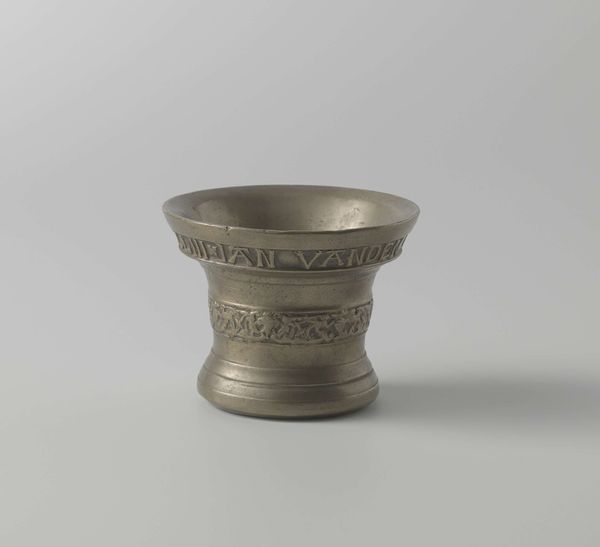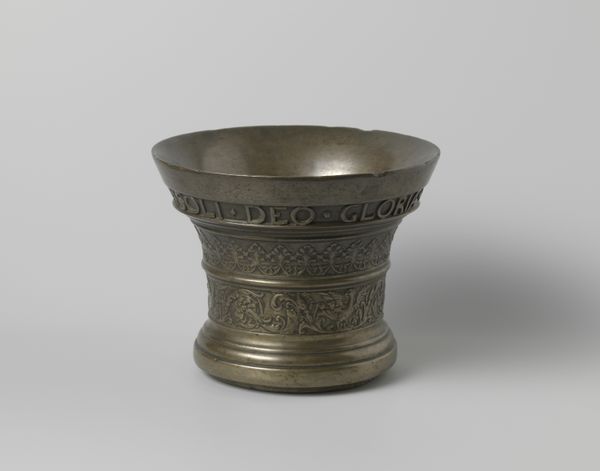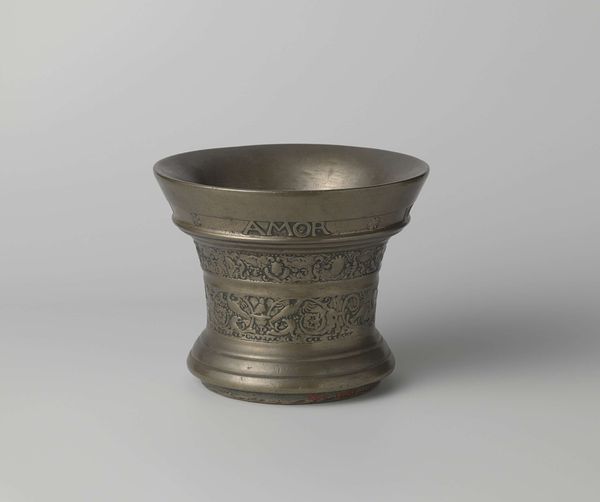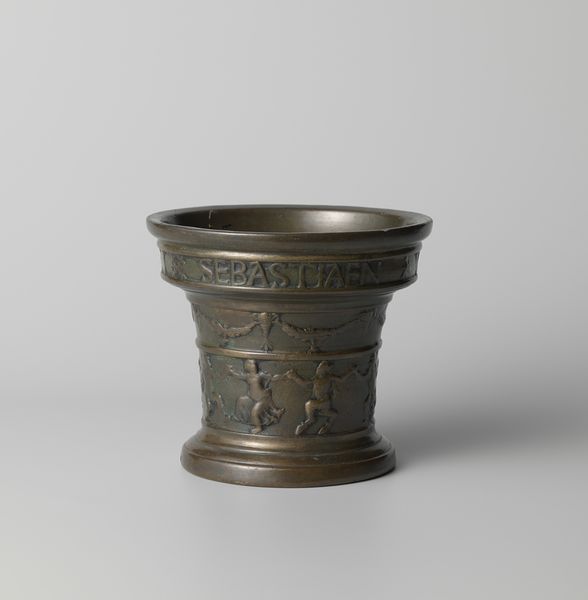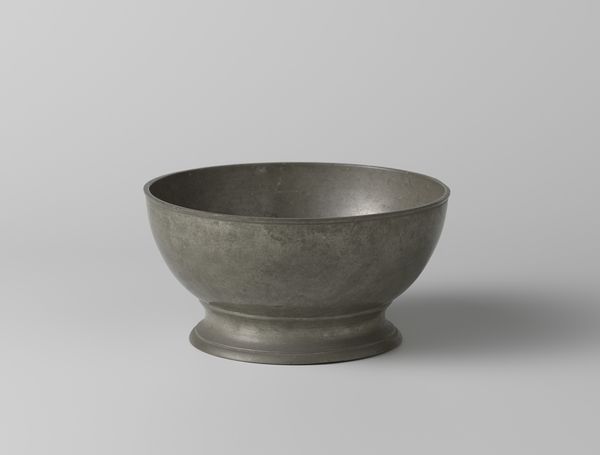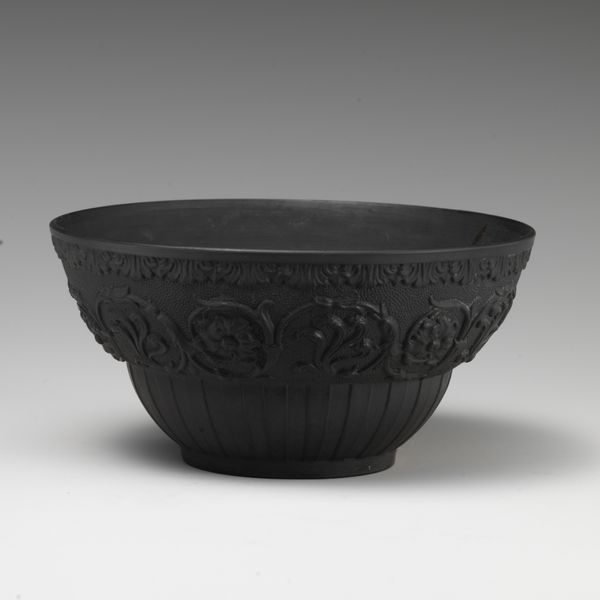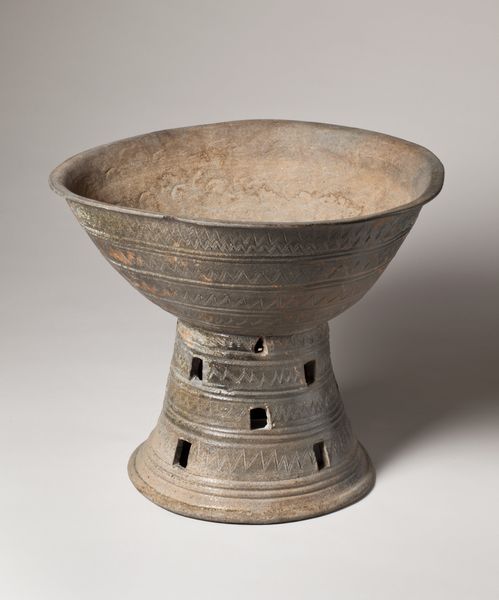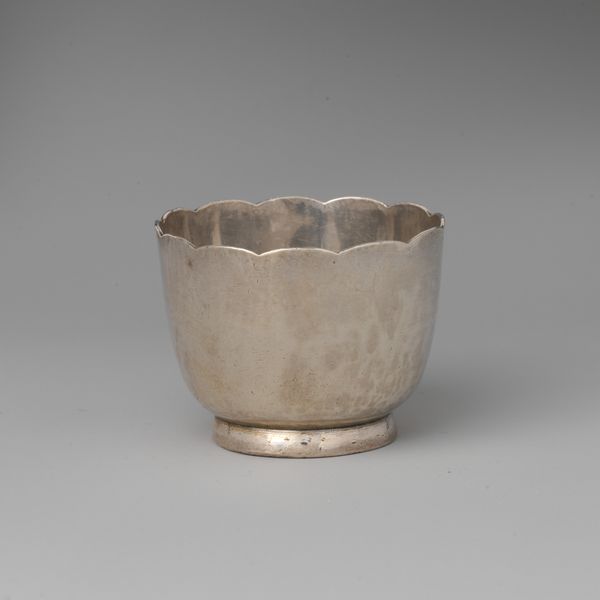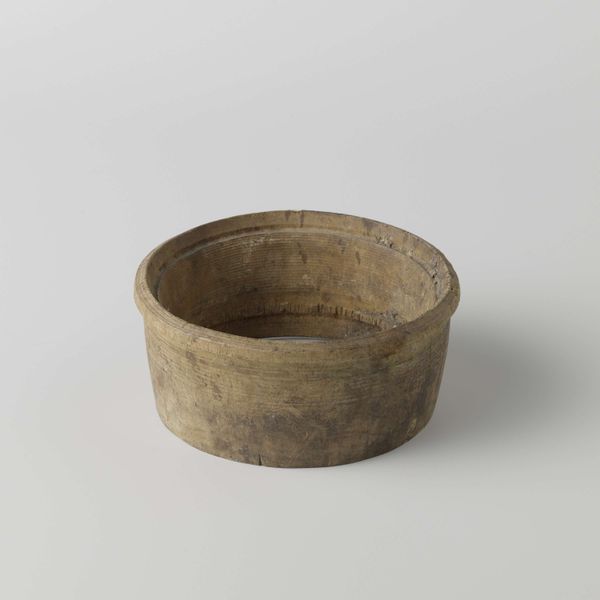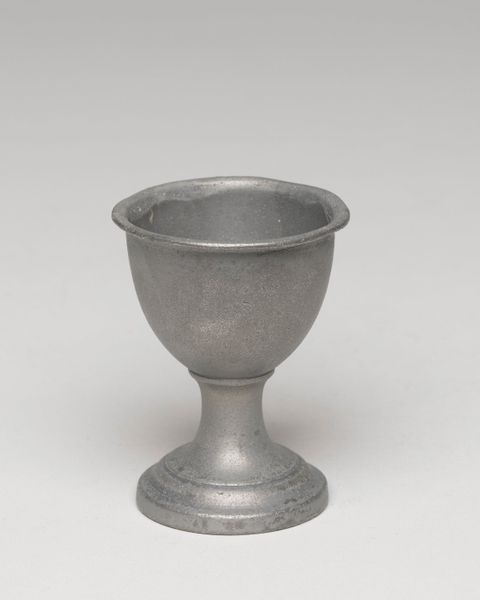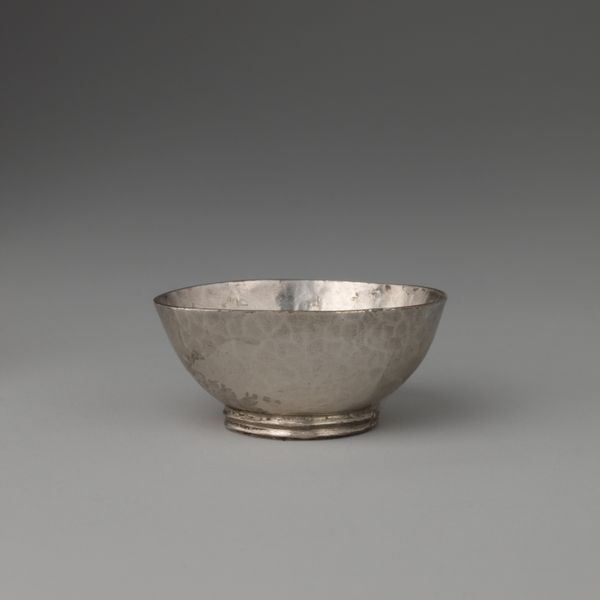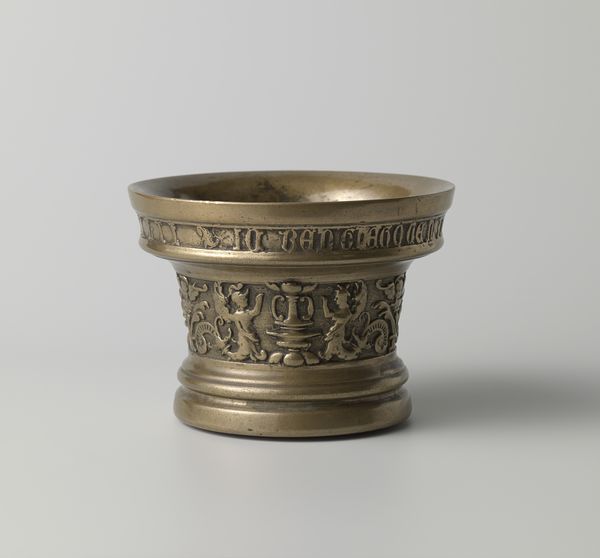
metal, bronze, sculpture
#
metal
#
bronze
#
11_renaissance
#
sculpture
Dimensions: height 15.4 cm, diameter 22.3 cm, weight 7.2 kg
Copyright: Rijks Museum: Open Domain
Editor: So this bronze mortar, made in 1591 by Peeter van den Ghein II, is intriguing! It seems so simple, yet solid and functional. What draws your attention to this object? Curator: I’m particularly interested in how the making of this mortar collapses the traditional boundaries between art and craft. Consider the labor involved: the selection and preparation of the bronze, the casting process, and the inscription “Peeter van den Ghein me fecit.” It's not just a mortar; it's a claim to authorship. How does knowing the date influences our reception? Editor: That's fascinating! The inscription almost transforms it from a utilitarian object into a statement. What sort of statement? Curator: Precisely! It shifts the focus from the object’s mere utility to the means of its production and the skill of its maker. In 1591, guilds and workshops regulated production. Was this commissioned or speculative work? Considering the material, how would its owner signal status? What impact does that context have on your reading of this mortar? Editor: I hadn't thought about the economics or how a simple mortar might have been a signifier of status. That gives me a whole new appreciation for this object. Curator: And for me, understanding your initial perspective reminds me of the enduring tension between form and function and how much the art world has changed since the late Renaissance. What a treat!
Comments
No comments
Be the first to comment and join the conversation on the ultimate creative platform.
